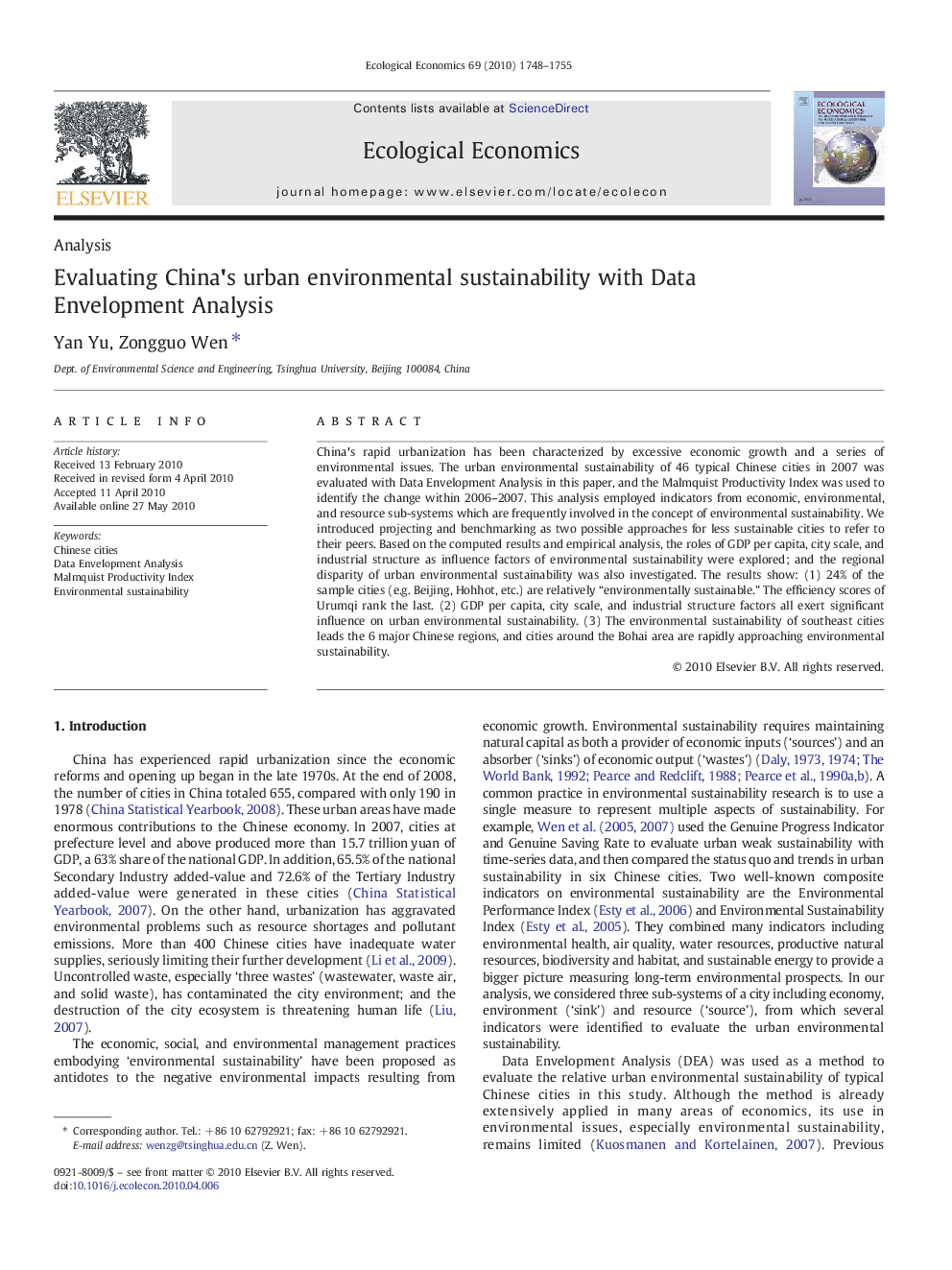| Article ID | Journal | Published Year | Pages | File Type |
|---|---|---|---|---|
| 5050995 | Ecological Economics | 2010 | 8 Pages |
China's rapid urbanization has been characterized by excessive economic growth and a series of environmental issues. The urban environmental sustainability of 46 typical Chinese cities in 2007 was evaluated with Data Envelopment Analysis in this paper, and the Malmquist Productivity Index was used to identify the change within 2006-2007. This analysis employed indicators from economic, environmental, and resource sub-systems which are frequently involved in the concept of environmental sustainability. We introduced projecting and benchmarking as two possible approaches for less sustainable cities to refer to their peers. Based on the computed results and empirical analysis, the roles of GDP per capita, city scale, and industrial structure as influence factors of environmental sustainability were explored; and the regional disparity of urban environmental sustainability was also investigated. The results show: (1) 24% of the sample cities (e.g. Beijing, Hohhot, etc.) are relatively “environmentally sustainable.” The efficiency scores of Urumqi rank the last. (2) GDP per capita, city scale, and industrial structure factors all exert significant influence on urban environmental sustainability. (3) The environmental sustainability of southeast cities leads the 6 major Chinese regions, and cities around the Bohai area are rapidly approaching environmental sustainability.
